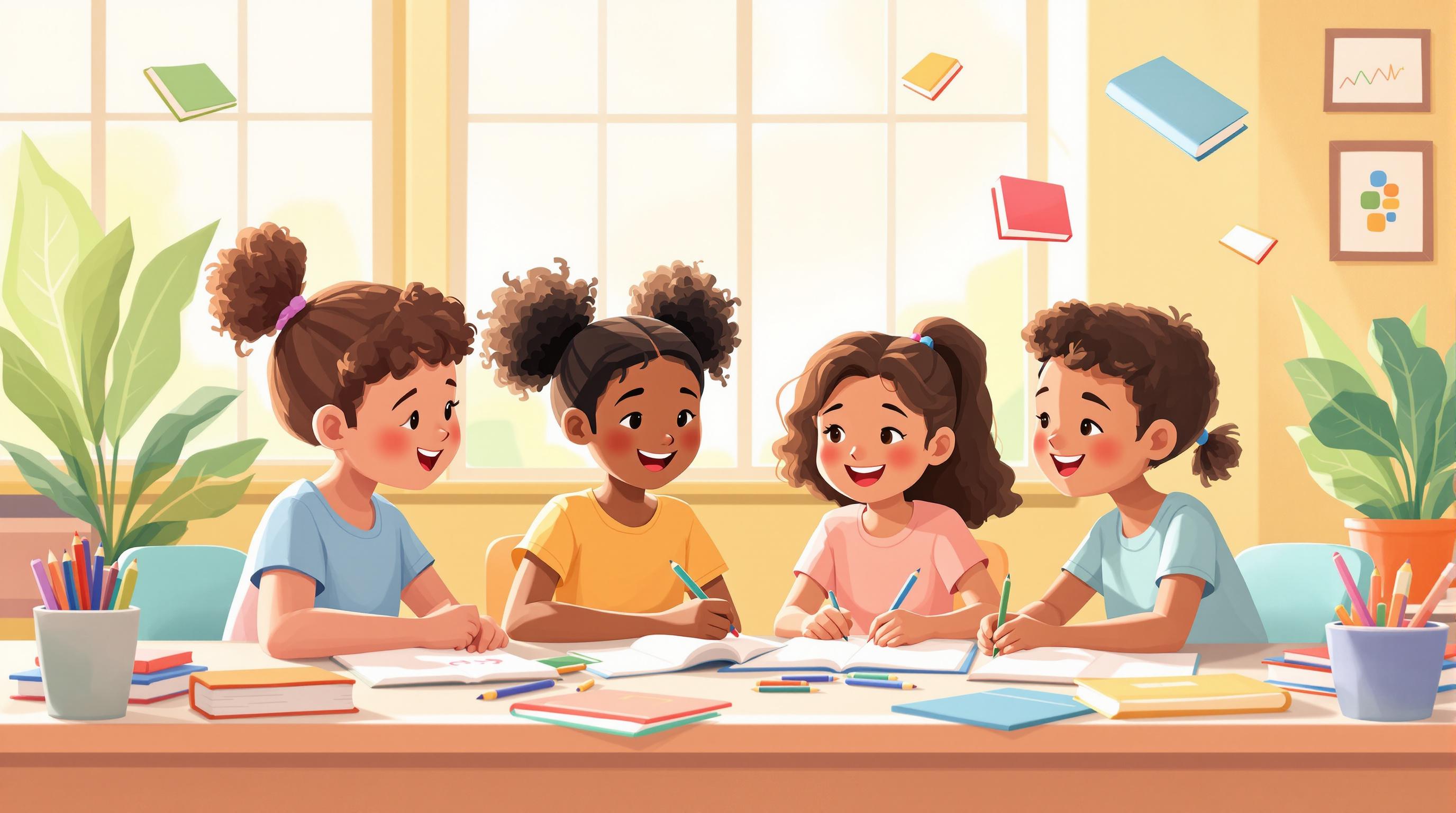Most teachers would agree that traditional homework often falls short in engaging students and promoting real learning.
But what if homework could actually help students master key skills and prepare them for the real world? Well, it's possible by reinventing homework to align with 21st century learning principles.
In this article, we'll explore the problems with traditional homework, make the case for change, and provide practical strategies to design meaningful assignments that develop critical thinking, collaboration, communication, and other essential competencies today's students need.
The Need for Rethinking Homework
Homework has been a staple of education for decades, but traditional models often fail to provide meaningful learning experiences relevant to 21st century skills. As classrooms evolve, so too must assignments that support student growth.
The Problems with Traditional Homework
- Busy work: Worksheets and textbook questions rarely inspire engagement or tap into critical thinking. Students see little value in these types of homework.
- One-size-fits-all: Assignments catered to the "average" student overlook learning differences among children. Struggling students can get left behind while advanced students lack challenges.
- Disconnect from real world: Fact memorization and repetition don't help students develop skills like communication, collaboration, creativity and critical analysis required in modern careers.
Why We Need to Change
The workplace has transformed drastically since traditional homework models were developed. To prepare students with 21st century skills:
- Assignments should tie into class material while allowing students to apply concepts in creative ways. This promotes deeper, personalized learning.
- Homework should teach time management through reasonable assignments conducive to life outside school.
- Collaborative projects build teamwork, communication and critical thinking central to adult careers.
- Evaluations should assess mastery rather than completion rates. This enables teachers to better address individual student needs.
Rethinking the role of homework empowers students with modern skills and deeper knowledge. The goal is engagement and growth, not just busy work.
What are some alternatives teachers can use to replace traditional homework assignments?
Teachers can explore several creative alternatives to replace traditional homework assignments and better engage students:
Project-Based Homework
- Assign open-ended projects that allow students to apply concepts from class. For example, have them design their own small business, create a short film, or build a model.
- Let students choose project topics aligned with their interests to increase motivation. Provide rubrics detailing project requirements and grading criteria.
- Project-based homework enables students to develop critical thinking, creativity, and collaboration skills. The hands-on nature boosts engagement and retention.
Educational Video Games
- Well-designed video games teach problem-solving, spatial skills, motor skills and more. Assign educational games that align with current lesson topics.
- Useful platforms include: Classcraft, Dragonbox, Motion Math Games, Math Blaster, and Science Blaster. Most offer teacher dashboards to track student progress.
- Video games deliver content through interactive scenarios that feel less like traditional homework to students.
Passion Projects
- Have students read self-selected books and deliver short book reports or creative projects based on their reading.
- Letting students explore topics they are intrinsically passionate about increases engagement and learning.
- Passion projects teach research skills, independent learning habits, and boost reading comprehension.
The key is creating homework alternatives that remain educational while feeling less like rote assignments to students. Prioritize hands-on, collaborative projects focused on problem-solving over repetitive worksheet-style busywork.
How do I restructure my class and instructional activities so students can attain 21st century skills?
To help students develop 21st century skills in the classroom, here are some key strategies to implement:
Make Learning Personalized
Get to know your students' individual interests, strengths, and goals. Then design activities tailored to them. For example, let students pick project topics aligned with their passions. This intrinsic motivation helps them develop critical thinking and problem-solving abilities.
Prioritize Real-World Relevance
Replace textbook examples with real-world case studies. Have students research issues in their local communities. These authentic learning experiences build skills like communication, collaboration, and social responsibility.
Embrace Technology
Integrate user-friendly edtech tools into instruction. Platforms like LessonBud enable you to quickly create personalized assignments. This gives students more ownership over their learning path while saving you lesson planning time.
Allow Space for Reflection
Schedule regular check-ins where students self-assess their progress. Maintaining this reflective practice is key for improving metacognition, self-direction, and other essential life skills.
With some restructuring, you can shift classroom dynamics to empower students as self-guided, engaged learners equipped for the 21st century. The strategies above are a starting point, but you can continually refine approaches based on specific needs. The goal is learning experiences that are active, meaningful, and personalized.
How can you turn your classroom into 21st century?
Here are some key strategies to help manage a 21st century classroom:
Embrace technology
Integrate educational technology tools into your teaching. Leverage AI-powered software like LessonBud to create engaging assignments, track student progress, and communicate with parents. These tools can save time while providing personalized learning experiences.
Promote collaboration
Get students working together on group projects and assignments. Collaboration aligns with the way work is done in the real world. Set expectations for teamwork and use technology to facilitate communication and task management.
Teach critical thinking
Pose open-ended questions that develop critical thinking skills. Guide students to evaluate information, think creatively, and problem solve. These skills are essential for success in the 21st century workplace.
Personalize instruction
Use data and technology to provide customized learning paths tailored to each student's needs and interests. AI tools like LessonBud enable creating personalized homework and tracking individual progress.
Develop digital citizenship
Teach students to use technology responsibly. Set guidelines for appropriate online behavior and ensure students understand issues like privacy, security, and digital footprints. These skills will serve them well in life.
The key is leveraging technology to facilitate more personalized, collaborative learning while developing essential skills for the 21st century. With the right tools and teaching methods, classrooms can prepare students for future success.
sbb-itb-bb2be89
What are the learning activities to develop 21st century skills?
Some of the most effective active learning strategies for building critical thinking, communication, collaboration, and creativity (the 4Cs) in the 21st century classroom include:
Individual, Pair and Group Tasks
- Problem-based assignments where students apply knowledge to real-world issues
- Student-driven projects centered around their own interests and questions
- Reflective journaling to process learning and make connections
- Self and peer reviews to develop metacognition and accountability
Presentations and Discussions
- Student presentations to share learning with authentic audiences
- Socratic seminars for text-based dialogue and debate
- Think-pair-share to promote thoughtful exchange of ideas
- Jigsaw activities to dissect concepts and teach peers
Technology Integration
- Online collaboration tools to co-create content like wikis and Google Docs
- Multimedia projects to demonstrate learning through videos, podcasts, blogs, etc.
- Coding activities and design challenges to build computational thinking
- Augmented and virtual reality to spark engagement and perspective-taking
The key is creating opportunities for students to construct their own learning through purposeful activities that leverage their interests, perspectives, and developing skills. This empowers self-directed and lifelong learning essential for success in the 21st century.
Key Principles for Effective Homework
Homework should enhance student learning and development. As educators design assignments, three core principles rise to the fore:
Promote Mastery Through Practice
Homework presents opportunities for students to practice key skills and solidify their understanding of essential concepts. Well-designed assignments allow learners to apply what they've studied, take risks, and receive feedback, enabling deeper mastery. Rather than busywork, homework should target progression towards clearly defined learning objectives.
Personalized and Adaptive
One-size-fits-all homework often misses the mark. Assignments should align to individual student needs, abilities, and paces of learning. Personalized homework accommodates different learning styles and promotes differentiation. Adaptive assignments dynamically adjust based on a student's unique strengths, weaknesses, and evolving competencies over time.
Focus on Real-World Application
Homework shouldn't just cover rote academic concepts - it should bridge school studies with authentic real-world contexts. Assignments that incorporate modeling, simulation, and problem-solving focused on relatable situations drive engagement and allow students to gain practical competencies. Tying learning to tangible applications cements comprehension.
Though shifts, homework remains an integral educational tool. By realigning assignments to principles of mastery, personalization, and application, educators can engage students in meaningful skill-building that transcends the classroom context.
Strategies for Designing Effective Homework
Teachers can utilize several methods to create meaningful homework assignments that drive student learning and engagement. By leveraging technology, emphasizing project-based learning, and promoting collaboration, educators can transform traditional homework into impactful learning experiences.
Leverage Technology for Personalization
Educational technology tools allow teachers to efficiently tailor assignments to each student's unique needs and interests. For example:
- Adaptive learning platforms like LessonBud automatically adjust homework difficulty based on individual student performance data. This ensures students are consistently challenged at their level.
- Automated homework generators can create endless variations of practice questions for each student. This prevents answer sharing and motivates students to complete their own work.
- Digital portfolios and journals give students multimedia options for demonstrating understanding, enabling diverse learning styles. Portfolios also develop vital technology skills.
By personalizing homework through EdTech integration, students receive assignments that resonate at their level and learning style for maximum engagement.
Emphasize Project-Based Learning
Well-designed projects allow students to construct knowledge by completing complex, applied tasks over an extended timeframe. Effective projects:
- Connect to real-world contexts so students recognize relevance while developing career skills like collaboration, communication, critical thinking, and creativity.
- Offer student choice and flexibility in project topics, formats, timelines, and group configurations so students can customize around individual talents and schedules.
- Leverage technology tools like online project boards, digital portfolios, and secure online peer review spaces to manage and showcase multimedia student creations.
- Assess both process and product using frequent check-ins, peer reviews, self-evaluations, and final project grading. This emphasizes metacognition while holding students accountable.
By emphasizing open-ended, applied learning through technology-powered projects, students gain more from homework than short-term content retention.
Promote Collaboration and Peer Learning
Well-structured collaborative assignments allow students to learn from and motivate one another while building teamwork skills. Effective strategies include:
- Think-Pair-Share activities where students reflect independently, discuss ideas with a peer, then share out to the class. This ensures all students have an opportunity to process concepts.
- Jigsaw models where student groups become experts on one topic then teach it to others. This facilitates peer-to-peer teaching.
- Online discussion boards give students a secure space to post perspectives, ask and answer peer questions, debate respectfully, or collaborate on group assignments.
- Peer review activities build communication skills while allowing students to evaluate others' work constructively against a rubric. Online peer review platforms provide anonymity during sensitive feedback processes.
Fostering positive interdependence and accountability through collaboration allows students to learn deeply from peers while developing vital teamwork abilities.
Assessing Mastery and Providing Actionable Feedback
Setting Clear Learning Objectives
Clearly defined learning objectives are essential for aligning assessments and providing meaningful feedback. By outlining specific skills and knowledge students should demonstrate, teachers can craft assignments that accurately evaluate mastery. Additionally, sharing rubrics and success criteria upfront allows students to self-assess their progress.
Some best practices around learning objectives include:
- Ensuring they are specific, measurable, achievable, relevant and time-bound
- Linking objectives directly to standards and competencies
- Using action verbs that describe observable skills
- Sharing objectives with students before assignments
- Designing rubrics and assessments tied to objectives
With transparent objectives and success criteria, both teachers and students can better track growth over time.
Utilizing Self-Assessment and Reflection
Self-assessment shifts some of the evaluation responsibility onto students, building accountability, metacognition and self-directed learning skills.
Some effective self-assessment strategies include:
- Reflection journals where students identify areas of strength and areas for improvement
- Using rubrics or checklists for students to evaluate assignment quality
- Student-led conferences to review progress and set goals
- Modeling self-assessment strategies for students early on
By evaluating their own work, students learn how to monitor comprehension, pinpoint knowledge gaps, and take ownership of their learning. Teachers can then use student self-assessments to provide personalized feedback and support.
Providing Targeted and Timely Feedback
For feedback to truly enhance learning, it must be specific, actionable and provided promptly while memory of the work is still fresh. Some best practices around feedback include:
- Highlighting 1-2 specific strengths and areas for improvement rather than overwhelming students
- Modeling/demonstrating correct solutions rather than just pointing out flaws
- Allowing students to incorporate feedback and resubmit work
- Scheduling regular 1-on-1 conferences to discuss progress
- Offering feedback throughout unit rather than just at end
Constructive feedback fuels continuous improvement when delivered consistently and compassionately. By tailoring guidance to individual needs, teachers enable success for all students.
Conclusion and Next Steps
Homework plays a critical role in reinforcing learning and preparing students for the real world. However, traditional homework methods often fail to engage 21st century learners. As this article has shown, there is a need to reinvent homework assignments to make them more relevant, personalized, and meaningful.
Here are some key takeaways:
- Rethink homework objectives to focus more on skill-building rather than rote practice
- Incorporate project-based and experiential learning elements
- Leverage technology for more engaging, interactive assignments
- Personalize homework based on individual student needs and interests
- Emphasize quality over quantity when assigning homework
To put this into practice, teachers can start small by tweaking one or two regular homework assignments. For example, transform a basic math worksheet into a personalized online quiz. Or add a hands-on component to a writing assignment, like interviewing a family member.
Over time, aim to diversify the types of homework given, while ensuring proper scope and alignment to learning goals. It is important not to overwhelm students. Collaboration with other teachers can provide inspiration.
Reinventing homework requires an iterative mindset focused on engagement. As learning needs and technologies change, so too should homework formats. Maintaining an openness to new ideas will lead to assignments that truly matter for 21st century classrooms.


